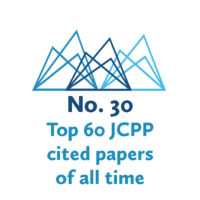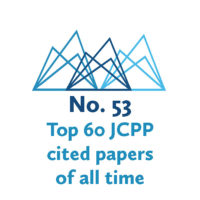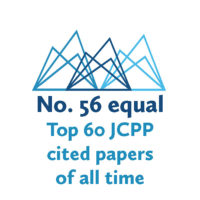Environmental influences
-

Most Cited JCPP Articles #9 of 60
Most cited JCPP papers #9 of 60: Antenatal maternal stress and long-term effects on child neurodevelopment: how and why?
Read more -

JCPP Editorial: Volume 60, Issue 02, February 2019
“Closing in on causal links between environmental exposures and human development using observational data – “confound those confounders!”” by Pasco Fearon
Read more -

Podcast with Professor David Olds
In this podcast Professor David Olds talks to freelance journalist Jo Carlowe about his career, attachment and the work of Family Nurse Partnership.
Read more -

Most Cited JCPP Articles #30 of 60
Most cited JCPP papers #30 of 60: Parent-infant synchrony and the construction of shared timing; physiological precursors, developmental outcomes, and risk conditions
Read more -

Most Cited JCPP Articles #53 of 60
Most cited JCPP papers #53 of 60: Towards a family process model of maternal and paternal depressive symptoms: exploring multiple relations with child and family functioning
Read more -

Most Cited JCPP Articles #56 of 60
Most cited JCPP papers #56 of 60: Multicultural assessment of child and adolescent psychopathology with ASEBA and SDQ instruments: research findings, applications, and future directions
Read more -

Back to school
“The government has recognised the need for greater focus on child and adolescent mental health and wellbeing, although is yet to provide adequate funding to match its rhetoric or a clear strategy for what in-school intervention would look like. Whilst early preventative programmes can be really useful for young people, I can’t help but think that the newly proposed in-school mental health initiatives might to some extent be treating problems created by the education culture that has been set up.”
Read more -

Genetic factors influence the relationship between the home environment and onset of depressive symptom
Clinical depression is prevalent in adolescence, but how depression emerges and the nature of the early risk factors is unknown. Insight has now come from a study performed by researchers at King’s College London.
Read more -

Understanding eating disorder susceptibility requires an integrated sociological, biological and genetic approach
In 2015, Kristen Culbert, Sarah Racine and Kelly Klump compiled a Research Review on the underlying causes of eating disorders for the Journal of Child Psychology and Psychiatry.
Read more -

Expressed emotion varies with eating disorder diagnosis
Unique patterns of expressed emotion characterize communication within families with children affected by eating disorders, according to new research. Researchers across the USA recruited 215 adolescents (aged 12-19 years) with eating disorders and their families, and asked them to complete the Standardized Clinical Family Interview.
Read more